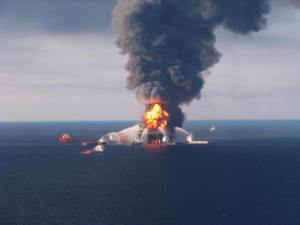http://www.commondreams.org/view/2013/02/21-0
Please find attached and below an overview of the outcomes of the Health and Energy Policy Roundtable and Workshop in Canberra last week. You will see there has been a decision to form a new collaborative network of health groups to work together to raise awareness of the health implication of current energy and minerals policy in Australia. This includes the development of a joint Position Statement on Health and Energy and a campaign featuring health professional clean safe renewable energy and highlighting the risks to health from coal and coal seam gas.
Signatories to this work so far include over 70 health groups, with two umbrella groups represented (Climate and Health Alliance and National Rural Health Alliance).
If you would like to also sign the statement and participate in this work, please contact Fiona Armstrong, CAHA Convenor convenor@caha.org.au or 0438900005.
_________________________
Health groups call for urgent action to address health risks from coal and coal seam gas
A new collaborative network of health organisations has agreed to joint action to raise awareness of the adverse health effects of Australia’s current minerals and energy policy at a meeting in Canberra this week.
Hosted by five national health organisations, the Public Health Association of Australia (PHAA), Climate and Health Alliance (CAHA), National Rural Health Alliance (NRHA), Climate Change Health Research Network (NCCARF-ARN), Australian Healthcare and Hospitals Association (AHHA), the Health and Energy Roundtable was attended by energy experts, community activists and health professionals, including doctors, physicians, nurses, physiotherapists and GPs, from dozen of organisations around the country.
A statement from the groups at the meeting, including the lead groups and joined by Cancer Council Australia, Heart Foundation, Australian Research Alliance for Children and Youth (ARACY), National Toxics Network (NTN), Australian Physiotherapy Association (APA), and New South Wales Nurses and Midwives Association (NSWNMA), signalled an intention to work together collaboratively to highlight the adverse health impacts and environmental damages associated with current minerals energy policy, particularly those relating to coal and coal seam gas.
“The risks to human health from energy and resources policy are not being well accounted for in current policy decisions,” the joint statement said.
“Significant policy reform is needed to ensure health and wellbeing is not compromised by policy decisions in other sectors. Recognising the importance of the social and environmental determinants of health is an important part of that.
“The overriding concern is that climate change is being driven by energy choices and minerals policies that privilege and prioritise the extraction and combustion of fossil fuels over safer, healthier, lower emissions, renewable energy resources.
“The local health impacts from coal mining, transportation and combustion are also a significant concern, and communities living in proximity to these activities are experiencing adverse social impacts, such as loss of amenity, displacement, and loss of social capital as well as facing increased risks of respiratory disease, heart disease, and lung cancer.
“The rapid expansion of the fossil fuel (coal and unconventional gas) industries in Australia demands these issues be urgently addressed.
There were also serious concerns raised about the availability of data and support for health research on the issue.
“A lack of monitoring and inadequate investment in research means there is grossly insufficient data available in Australia on health impacts to inform policy decisions. Research from international sources suggests major cause for concern in terms of exposure to pollution of water and air – these impacts need to be evaluated here in Australia.
“The health impacts of minerals and energy policy must be an area of research priority that is given significant levels of independent funding, and there needs to be greatly increased surveillance and monitoring to ensure sufficient data collection on which to base this research.”
The meeting identified a need for education for health professionals and the community more broadly around the health implications of energy policy choices, and encouraged health professionals across all disciplines to advocate for minerals, energy and climate policies on the basis of health.
“Health professionals have an important role to play in educating decision makers and the community about the health implications of energy choices and the health implications of climate change.”
The joint statement calls for precautionary approaches to policy and for the intergenerational consequences of decisions made now to be considered.
“The local and global effect of fossil fuel use on health and wellbeing is an immediate problem as well as an issue of intergenerational equity, with the exploitation of these resources causing irreversible harm to Earth’s systems, compromising the health and security of future generations.”
The groups have committed to work together and develop a framework for joint advocacy and announced plans for a campaign featuring health professionals calling for an urgent transition to safe, clean, renewable energy supply systems that do not contribute to global warming or harm human health and wellbeing.
The groups also announced an intention to develop a joint position statement on the health effects of Australia’s minerals and energy policies to inform public discussion about balancing the benefits and harms of our mineral and energy choices, specifically issues such as unconventional gas, coal exports and renewable energy.
For further information, contact Fiona Armstrong, CAHA Convenor convenor@caha.org.au or 0438900005.
Convenor, Climate and Health Alliance
W: www.caha.org.au
M: 0438 900 005
E: convenor@caha.org.au
T: @healthy_climate

